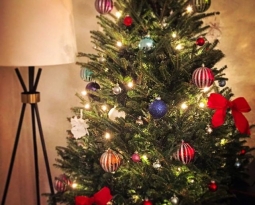A Njabini Sunrise
We’re here! Africa. Well, Kenya to start.
At first glance, it reminds me of India: abject poverty, haphazardly placed bundled garbage, potholes, unrecycled plastic, roaming goats, cows, and donkeys, shoeless children. All that’s missing are the monkeys… Here, the skin of the people is about four shades darker, and there is – at least from what I’ve seen – less of a sense of humor. India’s people, no matter their plight, are always smiling. In Kenya, it’s tough to crack that initial grin. There’s a level of quiet, of reserve, of indifference, that almost makes you feel like you’re invisible, as Darryl so aptly put it. She’s right. Nobody sees me yet. Even when I smile.
Out of the city, similar to most third world highways, chaos rules. Diesel fumes run noxious; horn honking creates cacophonous melody. Buses, mass transport, and motorcycles are piled high and full. So many people moving from place to place. Robert, our driver who moonlights as a Kilimanjaro guide, is a jovial guy who tells us about his country. The Westlands of Nairobi is an enclave of the wealthy; con men run deep – especially ones in good suits; English is Kenya’s predominant language; 95% of people summit Kilimanjaro on 6-night hikes (whew…). He’s lovely and informative, and likes us off the bat. He gives us hope that his is the spirit of the people we’ve come to find. Robert smiles back. Every time.
As city bleeds into country, we climb to Njabini’s elevation of 8,500 feet. Located in the Great Rift Valley, Njabini is where Flying Kites’ Leadership Academy is located and we can’t wait to arrive. Darryl, Flying Kites and I are long, and fast friends. I’ve been waiting to enter their world in the same gracious, welcome way they entered (and changed) mine. We will volunteer our time at their children’s home; we will climb Kilimanjaro for their cause. En route, we pass gorgeous, tall pine forests and bushy, flat-topped acacia trees; perched, menacing vultures keep one eye open to dinner possibilities in villages of one story-dilapidated accommodations that line the roads. Everyone is on the streets – walking, chatting, working – children are all dressed in school uniforms. Njabini is different than Nairobi; I’ve started to see the color of this land.
We’re staying at the Gimwa Hotel, a spare guesthouse in Njabini’s small village. Our bathrooms (a luxury to begin with) look like I would imagine a Riker’s island set-up might look. The insects are enormous, my dinner was chopped meat and cabbage, and the air smells like burning wood. No matter, though. I’m in Africa. “Jambo” is the word for hello in Kenya, and in Njabini, I plan to use it loosely and with genuine feeling. Too bad that Mary and Ruth, the girls who man the Gimwa café, don’t care to respond to our Jambos.
I want to be Oprah; I want to be Madonna. I want schoolchildren of all ages to celebrate me in robe and song. I want to be crushed by the love of the African people. Isn’t that how it’s supposed to happen? I think that’s how everyone pictures Africa, but there’s a slower arc to the “mazungu” (white person) embrace.
On Day Two, I watched my first African sunrise. Before I left New York someone told me to cherish every sunrise. And at 5 AM, the roosters, donkeys, and rabid dogs reminded me that my first opportunity beckoned. The remnants of jetlag hadn’t quite left my sleepy frame, but awake and half-alert, I bundled up and crept outside for a peek. A murky blue start to my first Kenyan morning, and though the vision wasn’t as grand as I had expected, the gesture wasn’t lost on me. In that moment, thinking about where I was, and what I was about to experience, unbeknownst to me, I smiled. And the equally sleepy, bundled Njabini woman coming out of her hut behind the Gimwa looked up and met my eye.
Then, she smiled back.
Recent Posts




